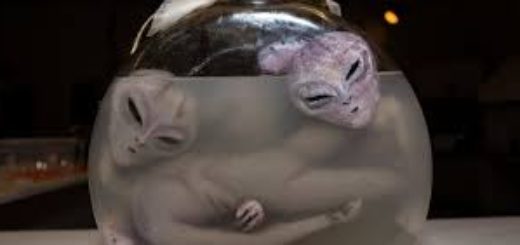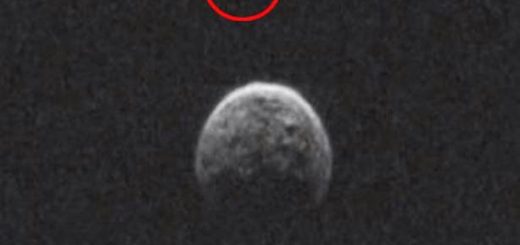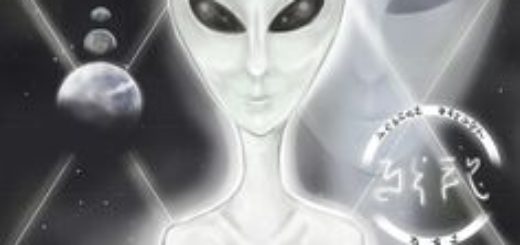The Disks of Baian-Kara-Ula

It all began in 1937-1938, in the mountains of Baian-Kara-Ula, the remote, uninviting slopes located on the border that divides China and Tibet. An archaeological expedition, led by the highly respected Chi Pu Tei, discovered a number of unique cave burial sites. What he and his team found in these previously unknown caves would soon be considered as something highly unusual.For many it would represent one of the greatest discoveries of the century, and change everything they perceived about their distant past and their origins as a people. Those who believed in the Genesis of the Bible only saw the so-called “scientific evidence” as possible proof of another creation of God intruding into Mankind’s domain. By faith, this domain and any other living, thinking beings came from the one God worshiped by Christian and Jew alike.
|
 |
The team then made what was called “the most incredible discovery of all.” Half buried in the dirt floor of each cave they found unusual disks, originally referred to as “odd stone disks” and described as “obviously fashioned by the hand of an intelligent creature.” These disks were approximately nine inches in diameter and three-quarters of an inch thick. In the exact center was a perfectly round 3/4 inch hole, and etched into its face was a fine groove spiraling out from the center to the rim, making the disk look like some kind of “primitive phonograph record.”
|
 Dalai Lama with Dr. Evans Dalai Lama with Dr. Evans
|
Shortly after World War II, a Polish professor named Lolladoff showed one of the ‘stone disks’ to British scientist Dr. Karyl Robin-Evans, who helped bring the story to the western world. Lolladoff claimed to have bought the disk in Mussorie in Northern India and that it was supposed to be from a mysterious people called the “Dzopa” (or “Dropa”) who had used it for religious rituals.Robin-Evans would follow the trail of the Dropa to its origins, and was able to take a rare photograph of the Dropa leaders in 1947. His visit with the Dalai Lama was legendary, and provided a wealth of information on the reclusive, unique tribe of people.
|
 The Dropas ruling couple (1947) – The Dropas ruling couple (1947) –
Hueypah-La (4 ft. tall) and Veez-La (3 ft. 4 in. tall) } |
According to Nui, one of the lines of the hieroglyphs read,“The Dropas came down from the clouds in their aircraft. The men, women and children of the neighboring peoples (Ham) hid in the caves ten times before sunrise. When at last they understood the sign language of the Dropas, they realized that the newcomers had peaceful intentions…”.
Another section of the writings expressed ‘regret’ by the Han tribe that the aliens’ spaceship had crash landed in such a remote and inaccessible mountains and that there had been no way of building a new one to enable the Dropas to return to their own planet. In the years since the discovery of the first disk, archeologists and anthropologists had learned more about the isolated Bayan-Kara-Ula area. Much of what they learned seemed to corroborate the bizarre story recorded on the discs. Legend still preserved in the area spoke of small, gaunt, yellow faced men who ‘came from the stars, long, long ago’. |
Russian archaeologists are puzzling over a remarkable collection of stone discs, thousands of years old, found in the mountains bordering China and Tibet. So hard is it to explain them in terms of earthly experience that the archaeologists do not rule out the possibility that the discs may have come from outer space.
A total of 716 discs, like Stone Age gramophone records have been picked up in recent years by men exploring caves in the Bayan-Kara- Ula mountain range, reports the Soviet Union's new English-language magazine, Sputnik.
Each disc has a central hole and irregular grooves spiraling out to the edge, but the report says (quite seriously) that the groves are not sound tracks. It is thought that they are some form of ancient writing, but scientists have so far failed to decipher them.
 |
Chinese archaeologists estimate that the discs are about 12,000 years old, but have made no headway at all in trying to explain their purpose or how they came to be in the caves.The Russians, who have examined some of the discs in a Moscow laboratory, claim to have made two important discoveries. One is that the discs contain certain traces of metal; particularly cobalt. Secondly, when placed on a special turntable they hummed in an unusual rhythm like an electrical charge was passing through them.
|
The Russian Zaitsev, who has spent 30 years collecting evidence that intelligent beings from outer space have had contact with the earth, believes that the discs may give substance to ancient Chinese legends of small, gaunt, yellow-faced men who came down from the clouds many centuries ago ...
Drawings on the cave walls portrayed beings with round helmets, and drawings of the sun, moon and stars were shown with interconnecting rows of dots. The interconnecting dots could possibly portray the routes traveled by the ancestors of the beings in the graves or might have been drawn to show the outerspace origin of the ones who perished there in the cave ...
In 1995 China released the following news report::
“In the province of Sichuan, which lies on the eastern border of the Baian-Kara-Ula mountains, 120 people of a previously ethnologically unclassified tribe have been discovered. The most important aspect of this new tribe is the size of its people: No taller than 3 ft. 10 in., the smallest adult measuring only 2 ft. 1 in! This discovery might be the first hard evidence on the existance of the Dropa/Dzopa – a people whose predecessors are said to have come from the stars.”
Today, the isolated area between Tibet and China is inhabited by two tribes of people who, in fact, call themselves the Dropa and the Han. Once enemies, these two tribes now co-exist peacefully. Anthropologists have been unable to categorize either tribe into any other known race; they are neither Chinese nor Tibetan. Both tribes are of pygmy stature, adults measuring between 3-foot-6 and 4-foot-7 with an average height of 4-foot-2, and body weights of 38 to 52 pounds.
They are yellow-skinned with thin bodies and disproportionately large heads, corresponding to the skeletal remains found in the caves in 1938. They have sparse hair on their bodies and have large eyes that are not Asian in aspect, but have pale blue irises. The Dropa people and their talking stone disks remain as mysterious today as they did in the late 1930s. Many researcher feel that the Dropa stone disks are definitive proof of an alien race that “came from the stars.”




 Creators of mankind
Creators of mankind Description of “Tall white aliens”
Description of “Tall white aliens” Where they came from?
Where they came from? About hostile civilizations
About hostile civilizations The war for the Earth
The war for the Earth “Tall white aliens” about eternal life
“Tall white aliens” about eternal life Video: “Nordic aliens”
Video: “Nordic aliens” Aliens
Aliens Alien encounters
Alien encounters The aliens base
The aliens base UFO
UFO Technology UFO
Technology UFO Underground civilization
Underground civilization Ancient alien artifacts
Ancient alien artifacts Military and UFO
Military and UFO Mysteries and hypotheses
Mysteries and hypotheses Scientific facts
Scientific facts


















